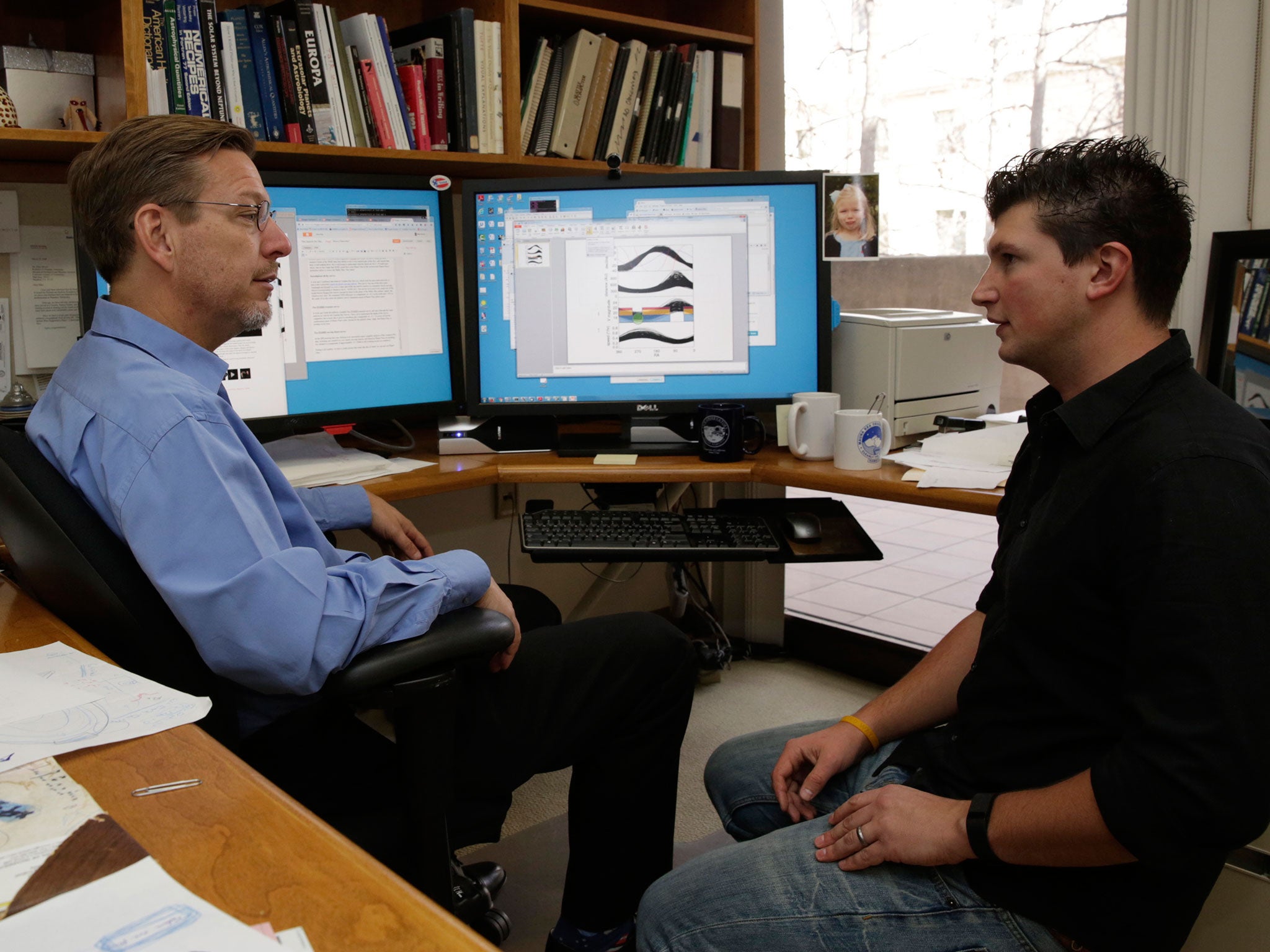Planet 9: Everything we know about this new mysterious dark world
The gas-giant planet is believed to be ten times the mass of Earth and as big as Neptune

Your support helps us to tell the story
From reproductive rights to climate change to Big Tech, The Independent is on the ground when the story is developing. Whether it's investigating the financials of Elon Musk's pro-Trump PAC or producing our latest documentary, 'The A Word', which shines a light on the American women fighting for reproductive rights, we know how important it is to parse out the facts from the messaging.
At such a critical moment in US history, we need reporters on the ground. Your donation allows us to keep sending journalists to speak to both sides of the story.
The Independent is trusted by Americans across the entire political spectrum. And unlike many other quality news outlets, we choose not to lock Americans out of our reporting and analysis with paywalls. We believe quality journalism should be available to everyone, paid for by those who can afford it.
Your support makes all the difference.Astronomers claim to have found “good evidence” of a mysterious ninth planet in the Solar System which they believe has for decades escaped being detected directly by the most powerful telescopes.
The gas-giant planet is believed to be ten times the mass of Earth and as big as Neptune, the eighth and furthest planet from the Sun, but orbiting several billions of miles beyond the path of Neptune, making it effectively invisible to direct detection.
Ever since Pluto was downgraded to a dwarf planet ten years ago, there has been eight known planets making up the Solar System, but astronomers have for years proposed the existence of an extra “Planet X” lurking on the dark, icy fringes of the system.
Now two astronomers at the California Institute of Technology (Caltech) have carried out a computer-based modelling study which indirectly suggests that there is indeed a massive planet well beyond the detection capability of most telescopes.
They estimated that the new planet is 5,000 times the mass of Pluto, which orbits in a ring of rocky objects beyond Neptune known as the Kuiper Belt. They have reported their findings early to try to encourage other astronomers to look for it, they said.
"We could have stayed quiet and quietly spent the next five years searching the skies ourselves and hoping to find it. But I would rather somebody find it sooner, than me find it later," Caltech astronomer Mike Brown told The Associated Press.
"I want to see it. I want to see what it looks like. I want to understand where it is, and I think this will help,” said Dr Brown.
Several claims to an extra planet have been made over the years, but none has proven to be true. Dr Brown accepted that many astronomers will be sceptical of the latest announcement.
“It's such a long history of people being basically wrong that standing up and saying we're right this time makes us almost look crazy," Dr Brown said.
"Except I'm going to stand up and say we're actually right this time. The evidence for the first time is actually very good that this thing is actually out there,” he said.
The scientists believe the mystery planet is so far away that it takes between 10,000 and 20,000 years to orbit the Sun, compared to one year in the case of Earth. They are calling it “Planet 9” and suggested that it should be possible to detect it directly with powerful telescopes within the next five years.
Neptune was the last true planet to be discovered, in 1846. Although Pluto was discovered in 1930 it was downgraded to a dwarf planet in 2006, and Dr Brown played a key role in its reclassification.
Konstantin Batygin, a colleague at Caltech, said their findings amount to a revolution in planetary science. "For the first time in more than 150 years, there's good evidence that the planetary census of the Solar System is incomplete," Dr Batygin said.
The computer-modelling study is based on the discovery that six objects orbiting the Sun in the Kuiper belt, which is also known as the Twilight Zone, on the far reaches of the Solar System appear to be influenced by the gravitational pull of a much larger object – which can only be an orbiting planet.
"This is a prediction. What we have found is a gravitational signature of Planet 9 lurking in the outskirts of the Solar System. We have not found the object itself," said Dr Batygin, adding that the actual discovery, if and when it happens, will be "era-defining”.
Professor Brown, who announced the discovery in the Astronomical Journal, added: "This would be a real ninth planet. There have only been two true planets discovered since ancient times, and this would be a third. It's a pretty substantial chunk of our solar system that's still out there to be found, which is pretty exciting."
"We plotted up the positions of those objects and their orbits, and they matched the simulations exactly. When we found that, my jaw sort of hit the floor,” he said.
Alan Stern, principal scientist for New Horizons mission to Pluto and the Kuiper Belt, said he is withholding judgment on Brown and Batygin's prediction until further evidence or confirmation comes to light.
"This kind of thing comes around every few years. To date, none of those predicts have been borne out by discoveries," Dr Stern told Associated Press.
"I'd be very happy if the Brown-Batygin were the exception to the rule, but we'll have to wait and see. Prediction is not discovery."
Join our commenting forum
Join thought-provoking conversations, follow other Independent readers and see their replies
Comments